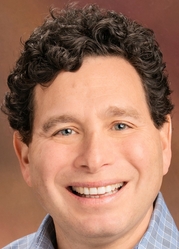An interdisciplinary team of clinicians from Brigham and Women’s Hospital had a bold idea in 2017. They would completely change the way things worked in their hospital’s emergency department so that the care provided to their patients was infused with a trauma-informed approach. That means recognizing how widespread trauma is and using a myriad of techniques to mitigate its harmful effects among patients, providers and staff.
The realization of just how widespread trauma is came to light in the landmark CDC/Kaiser Permanente Adverse Childhood Experiences Study (ACE Study) that linked adverse childhood experiences (ACEs) to adult onset of chronic disease, mental illness, violence and being a victim of violence in more than 17,000 adults.
The ACE Study examined 10 types of childhood traumas, including living with an alcoholic or depressed parent or experiencing abuse or neglect in these adults, who were mostly white, middle- and upper-middle class, college-educated, and had jobs and great health care. The study found that ACEs are common — most people have at least one. People who have four or more different types of ACEs — about 12 percent of the population — have a 1200 percent higher risk of attempting suicide and a 700 percent higher risk of becoming an alcoholic, compared with people who have no ACEs. Many other types of ACEs—including racism, bullying, a father being abused, and community violence—have been added to subsequent ACE surveys. (ACEs Science 101; Got Your ACE/Resilience Score?)
The epidemiology of childhood adversity—which produce ACE surveys—are one of five parts of ACEs science, which also includes how toxic stress from ACEs affects children’s brains, the short- and long-term health effects of toxic stress, how toxic stress is passed on from generation to generation, and research on resilience, which includes how individuals, organizations, systems and communities can integrate ACEs science to solve our most intractable problems.
Implementing trauma-informed practices is one way of integrating ACEs science. Internist Eve Rittenberg, psychiatrist Nomi Levy-Carrick, and Annie Lewis O-Connor, a nurse practitioner, explained their approach on May 14 to an online monthly gathering organized by TIHCER (Trauma-Informed Health Care Education and Research). The three are part of the interdisciplinary group at Brigham and Women’s Hospital that is participating in a three-year learning collaborative that began in 2018 and was organized by the Robert Wood Johnson Foundation. Their effort is one of several examples of emergency departments across the country that are adding another layer of care to the high-stakes, adrenaline-filled environment of the ER.

Why was it necessary to bring a trauma-informed approach into the hospital’s emergency department? To Lewis-O’Connor, the principal investigator for the project and the director and founder of the Coordinated Approach to Resilience & Empowerment Clinic, a clinic that provides trauma-informed care to survivors of domestic and sexual violence, the need was crystal clear: “I don’t think [the ER providers and staff] are sensitive to how culture, ethnicity and race play out in people’s lives and how it impacts how they show up in the ER.”
She points to drastically different reports she was hearing from patients in her clinic about their ER visits.
“The white college-educated girls would say ‘Oh my god’ they were so good to me, and ‘They were fabulous!’ And the girls of color would say, ‘I didn’t understand something they said, so they were really impatient with me.’ It might be a girl who goes home to a toxic environment every night where she hears gunshots. We don’t know her history,” says Lewis-O’Connor, noting that 90 percent of the ER staff is white, while at least a third of the patients they serve are people of color.
Lewis-O’Connor says that it’s clear from medical literature that stigma and bias are rampant in medical care. As one stark example, she says, “We know that black women are given less pain medication than white women.”
A recent review of medical research, published in the American Journal of Emergency Medicine, illustrates the point. Fourteen different studies showed that black people in pain were 40 percent less likely than white people to receive pain medication.
To O’Connor and the interdisciplinary team, trauma-informed care “ensures [that] individuals can engage in their healthcare in ways that support their choices and well-being while also supporting the effort to overcome oppression and re-traumatization.”
The interdisciplinary team at Brigham and Women’s Hospital includes an internist, a nurse, a psychiatrist, a clinical social worker and an emergency room physician. And to Rittenberg, the interdisciplinary nature of the team is a clear asset.

“As we think about trying to make systems change in a hospital that is incredibly hierarchical,” she says, “modeling cross-disciplinary teamwork and partnership has been a really important part of what we’re doing.” Members of the team have been involved in training primary and behavioral health clinics in ACEs science and trauma-informed care since 2013 within the Partners HealthCare system, of which Brigham and Women’s Hospital is part, and have spoken at ACEs conferences in Boston and around the country. (Here’s a link to an article the team members wrote on trauma-informed care last year.)
The value of working across disciplines was made apparent also in the group’s work with the RWJF learning collaborative, which included 8 other teams working on such things as mental health support for Latinx mothers of young children in Baltimore, introducing trauma-informed care to community organizations working with unaccompanied minors in Houston, and a collaboration among schools, social service and health care agencies to implement trauma-responsive practices in a community with high ACEs, poverty and community violence in Southeastern Michigan
Their involvement with the learning collaborative also led the team to realize the value of staff input.
“We had this broad idea that we were going to change the culture in our emergency department,” Rittenberg says. “One of the lessons I learned during the first year of the RWJ program was that it’s fundamental to know what the community you’re diving into wants rather than to impose our idea.” That realization resulted in changing the goal of their learning collaborative project to determine if trauma-informed practices are feasible and acceptable. It also meant changing their timeline for the project. So their plan is officially still in the first phase and will likely extend past 2021, the third year of the RWJF clinical scholars program.
Now they are surveying all levels of employees in the emergency department—including front desk clerks, ultrasound technicians, medical assistants, nurses, physician’s assistants doctors and social workers—and asking them questions around the Substance Abuse and Mental Health Services Act’s six guidelines for a trauma-informed approach. The questions are designed to determine the best way to foster physical and psychological safety for themselves and for patients.
The bottom line, says the interdisciplinary team in a joint email, is that, “From [ER employees’] responses, we can effectively design change that is acceptable and helpful across roles in the Emergency Department.”
Testing the waters for acceptability and what people need to do their jobs should be part of any trauma-informed approach, says Dr. Joel Fein, co-chair of the Philadelphia ACEs Task Force and director of advocacy and policy in the emergency department at the Children’s Hospital of Philadelphia (CHOP), which began training hospital employees in trauma-informed practices in 2013.

“I think one of the good ways to get buy-in for any initiative, especially in a busy, stressful environment like emergency medicine, is to start with how it will make [one’s] life and job easier,” says Fein. “And it’s true that understanding and using these techniques really reduces the stress for patients and for families and providers.”
A 2018 article that appeared in Annals of Emergency Medicine (and was coauthored by Fein), called “Trauma-informed care for violently-injured patients in the Emergency Department,” offers examples of those techniques. One is simply teaching people how to recognize the hallmarks of a trauma trigger in a patient that can put them in a state of “fight or flight.”
“When physicians recognize behavioral manifestations of trauma as predictable responses to emotional pain, it allows the opportunity to counsel patients on their symptoms, communicate effectively, and better tailor the care plan,” the journal authors wrote.
Fein also points to an example he observed where a nurse in the emergency department could tell that a child who was coming in by ambulance and was screaming was likely being triggered by being restrained on a stretcher.
“Under the circumstances, he was more upset than most children his age,” recalls Fein. “So, the nurse immediately got the child out and into his parent’s lap to calm him down.”
As far back as the early 1990s, before trauma-informed was a concept and the ACE Study had yet been done, Dr. David McCollum honed similar skills in his family practice—skills that he was able to apply when his job shifted to being a doctor in the emergency room at Ridgeview Medical Center in Waconia, Minnesota. McCollum went on to become a member of the Minnesota Health Care Coalition Against Violence and represented Minnesota on the American Medical Association’s National Advisory Council on Family Violence.

To him, the key is as simple as learning to be a good listener. “It was really just the tone of voice, the way you approach things that makes everybody feel like you’re really listening to them, that you’re letting people tell their own story instead of defining the story that you want to hear,” explains McCollum, who has since retired. “You don’t have to be a psychiatrist or a social worker; you just have to ask people, ‘What happened to you?’”
He recalls an incident in which a high school student was brought to the emergency department because of behavioral problems in school, and a mental health counselor who met with the teen told McCollum, “It’s just a teenager acting out.”
McCollum had a different reaction to the teenager.
“I walked in and said, ‘It looks like today’s a pretty shitty day for you’,” he recalls. “And she said, ‘That’s for sure.’ I asked her what was crummy about it, and I ended up hearing a story about her father shoving her up against the wall and putting her down [verbally], and all that kind of crap going on.” Then McCollum told the teen he was sorry that was happening to her, and that the way she was feeling made sense to him. And he went out and told the mental health worker what he heard. “She said, ‘I didn’t hear any of that.’ I said, ‘No you didn’t, but here it is.’”
The journal article co-authored by Fein describes the efficacy of such a probing, compassionate approach. Communicating in a way that recognizes the connection between behavior problems and emotional pain can “decrease the risk of inadvertently retraumatizing patients.”
Communication, whether with patients or among staff and providers, is also at the core of the trauma-informed work that the interdisciplinary team at Brigham and Women’s Hospital is moving forward.
O’Connor says that when they finish the surveys of the emergency room staff, which they expect to complete by the fall, they’ll bring the results back to a patient advisory team to get their input.
“You can see from some of the research I've done that having the voice of the patient [to] inform care is really a priority for me,” she says. “If we listen to patients, we will do much better at delivering care to them. But we don't, we're very prescriptive. It’s a hierarchy. ‘We know more than you, so we're going to tell you what to do.’ And I think in a trauma-informed care world, you would never do that. Because you're not going to give the best care.”
The team’s overall outcome data will look at whether the trauma-informed practices they implement make a difference to patients, says Lewis-O’Connor.
“I want to measure whether patients felt that they were treated better,” she says. “If they felt known. If they felt respected.”





Comments (0)